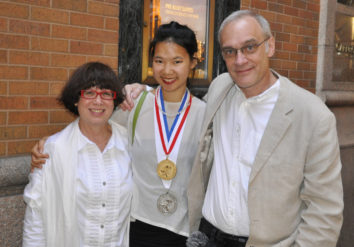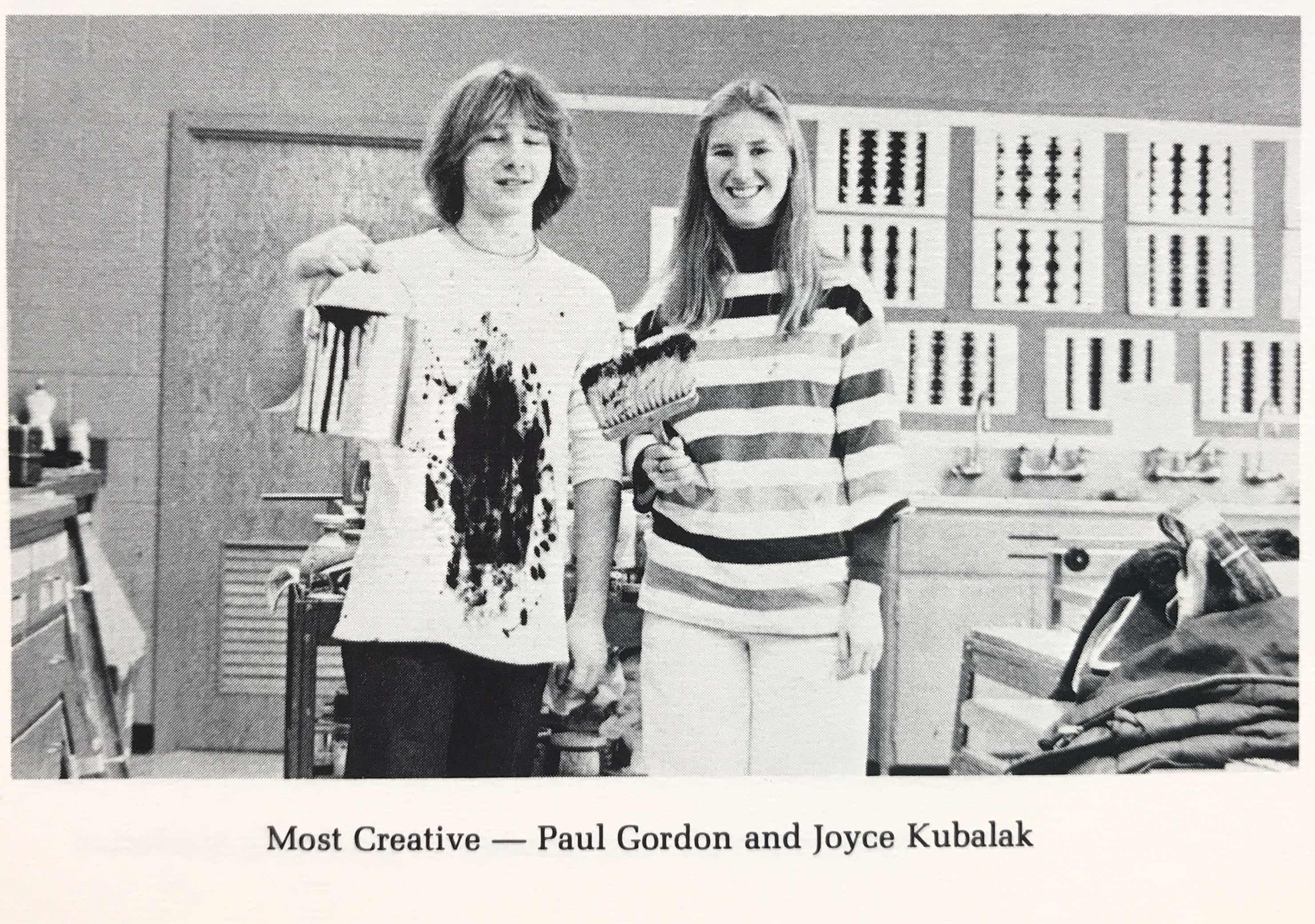Did you know the Scholastic Art & Writing Awards turn 100 in 2023?
Ahead of our upcoming centennial, we’re reaching out to all 97 classes of Scholastic Art & Writing Awards alumni to hear your #mygoldkey stories and collaborate on creating alumni opportunities for the next 100 years of the Awards. If you haven’t already, share your own Scholastic Art & Writing Awards journey by taking our brief alumni survey.
Below, we’ll share a sampling of the extraordinary stories we’ve received from our alumni, highlighting two #mygoldkey stories from the 1960s and 1970s.
1960s
“Receiving that level of recognition told me I was on the right track with my life. I never looked back. I have pursued a life in the arts and all that entails since high school. My first award ever was a National Catholic Book Week contest I won in the second grade. Who doesn’t like to be famous and get your picture in the paper? So [the Scholastic Awards] put the end cap on my senior year of school and college allowed me to enter the arts world for real. The recognition my students received was as important to me as my own…my students won awards locally and had work go on to New York for further review. It was a thrill for them and for me as their teacher. Then, getting to judge [the Scholastic Awards] brought me full circle. Perfect!”
-Mary Klein, 1967 Gold Medal Winner in Photography
Elizabeth Lide, 1965 National Gold Medal – Art Portfolio
When Elizabeth Lide was a high school student at RJ Reynolds High School (now a Magnet School for the Visual and Performing Arts) in Winston-Salem, North Carolina, making art was not a life-path “held in high regard” by the school, an attitude that kept her from enrolling in the art classes. As a senior, she finally found an art class and instructor—whose name she still remembers 55 years later—who encouraged her artistic curiosity. That very same year, 1965, she was awarded the highest possible distinction by the Awards, a National Gold Medal for her art portfolio.
Elizabeth went on to gain a BFA in graphic design and an MFA in printmaking and is now happily retired from a successful career as a graphic designer, teacher, and arts administrator. She keeps a full-time studio practice, shows in juried and invitational exhibitions, and is represented by Whitespace Gallery in Atlanta. She has been awarded residences most recently at MASS MoCA in 2018, VCCA-France in 2019, and the Hambidge Center in 2020.
But the best part of her Scholastic Art & Writing Awards legacy? Her daughter, Emma Ming Kayhart, won the National Silver Medal with Distinction for art portfolio and an American Visions Award in 2014. Her work was part of two exhibitions in NYC where she received the Scholastic awards on stage at Carnegie Hall after winning numerous Gold Keys at the state level. Seeing her daughter gain the same encouragement and support she did from the Awards was a full-circle moment.

1970s
“Winning this Award gave this young African-American child of a poor background the confidence to know that my dream was possible to fulfill when the world was saying to me daily that I did not matter and that I did not have the skills and intellect to compete with those that were of privilege.”
-Ezra Tucker, 1972 Gold Key Winner in Pen & Ink Drawing.
Joyce Kubalak-Szuflita, 1974-1977 Winner in Visual Art
A lot of our winners have shared that the recognition of the Scholastic Art & Writing Awards opened up a realm of career possibilities that were unknown or unfathomable before they received validation. But, to-date, 1974-1977 winner Joyce Kubalak-Szuflita is the only person who credits the Awards with helping her find a husband. Says Joyce “In my senior year, I received a four-year full-tuition scholarship through the Art Awards to the University of Denver, where I received a BFA in Fine Arts. Leaving the east coast broadened my world view. I discovered a love of theater and attended the Santa Fe Opera for the first time (1981). I worked there for two seasons (1985 and 1989) and met my husband there. Upon graduation (1981), with the urging of my college theater design professor, I went to NYC and studied at the Studio and Forum of Stage Design under Lester Polokov. I was accepted into the inaugural year of Local 829’s apprentice program, and would go on to work on films for Francis Ford Coppola, John Huston, Spike Lee, and Julie Taymor. So, if it wasn’t for the Scholastic Art Awards, I wouldn’t have had a fulfilling career at the top of the theater and film world. I wouldn’t have met my husband or had my twins. Thanks, Scholastic!”
For Joyce, the Awards are inextricably entangled with the discovery of her first artistic community. Her high school, West Springfield High School, in Springfield, VA, had two stand-out arts educators, Genevieve Roberts and Martha Foote who built the Awards into their curriculum, assisting all students with polishing individual works and portfolios for submission in addition to hosting frequent field trips to major art institutions. “We studied printmaking at what was then known as the National Collection of Fine Arts under Allan Kaneshiro. We studied portrait painting at the National Portrait Gallery. It was a time when the education departments at many cultural institutions had good funding. The art museums, cultural institutions, embassies, Library of Congress, and the Torpedo Factory Art Center were our playground. We were giddy with the experiences.”
With their support, the Awards became something of a mainstay and source of personal pride in their community. “We were artists but not unaware of our status and the power that it held. When our well-regarded student-produced art/literary magazine was going to be defunded, we fought back with the art awards as leverage and it was saved. For those years West Springfield HS and Arlington Heights HS in IL were Scholastic powerhouses with the highest number of awards nationally. We were very proud that our art awards were showcased next to our school’s basketball trophies. “
Though she has lost touch with many of her friends from that era, she remembers them to this day. And is hopeful that she’ll be able to get back in touch with them through the Awards’ alumni programs.





